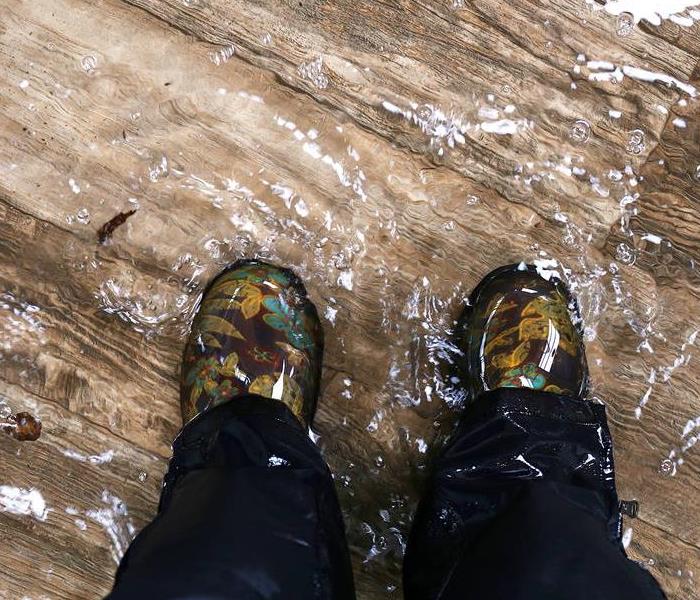How Much Does Water Removal Cost in Newark?
1/20/2021 (Permalink)
 SERVPRO of Newark, Southwest Fremont is ready to help you avoid more water damage. Call us today at (510) 737-8793.
SERVPRO of Newark, Southwest Fremont is ready to help you avoid more water damage. Call us today at (510) 737-8793.
SERVPRO offers Newark homeowners wide-ranging removal services minimizing immediate and long-term costs
When water spills occur, it is common to worry about the expenses likely to accumulate when dealing with the incident until everything gets back to normal. Since each incident is unique, and the dynamics might keep changing after the initial loss, the process of generating cost estimates is complicated. Involving a professional from the start helps in creating better estimates and managing the costs involved.
What typical issues push up the costs of water removal from Newark homes?
- Alternative accommodation costs
- Cleanup costs
- Repair expenses
- Injuries
When a water damage incident in Newark involves significant volumes of water, thus spreading to large swathes of the property, seeking alternative accommodation is wise for health reasons, as well as creating room to carry out restoration processes conveniently. The problem with such an arrangement mostly arises when you do not have clear information on how long water removal and other restoration processes might take. Our SERVPRO team inspects your property and makes estimates based on the amount of standing water and the total surface area left wet after an incident giving you an idea of how much time you need to stay away from your home.
If an incident involves clean water, extraction, and drying are the main processes involved in the restoration. However, for incidents involving grey waters, additional cleanup steps are necessary, which take additional time and consume other resources such as cleaning products, thus increasing the cost. A washing machine malfunction and spilling dirty water is a typical grey water loss.
What steps does SERVPRO take for optimal water removal?
Various options help in the accomplishment of the water removal process. Some standard options in almost every case include:
- Wet-vacuuming
- Mopping
- Ventilation
- Dehumidification
Each option has a different level of efficiency, while others serve as complementary steps. Our SERVPRO technicians maximize on steps that expedite the removal process. For example, from training and experience, our technicians know that extraction expedites removal 1200 times compared to evaporation. Therefore, we exhaust all extraction options before starting evaporation procedures. We use different types of extractors such as truck-mounted water extractors, dry-wet vacs, and drying mats to handle different extraction needs, such as removing surface water, water trapped in wet materials, as well as water hidden in cavities. By the time we set up air movers and dehumidifiers to dry the remaining wetness, there is minimal moisture to address.
The presence of permeable materials such as carpets in the loss area can hamper water removal efforts since such materials absorb and hold significant quantities of water. Although it might be possible to extract all the water from such materials using specialized tools such as weighted extractors, such a process takes longer since it requires several passes. Our technicians remove the porous material for offsite drying, thus speeding up the process.
Relying on options that reduce the time taken to remove water from a building helps in many ways. For instance, the period you have to deal with the inconvenience of a wet house is shortened. Expediting extraction and drying also helps our crews to reduce the cost involved since labor costs cover a significant percentage of the restoration expenses.
Can there be unnecessary restoration costs?
In the haste to restore your property to its usual condition after a water damage incident, you might feel like every cost you incur while doing so is justifiable. However, costs that do not contribute positively towards the restoration process must be avoided where possible.
Costs resulting from secondary damages during the restoration process fall under the unnecessary category. Such damages can occur during processes such as removing building materials or contents from the affected areas. Removal of carpets, baseboards, doors, and window trim is a standard procedure to facilitate better water extraction. Because the removal is not because of damage, the reinstallation of such materials is possible once extraction or other restoration procedures are over. However, improper removal can damage them, thus necessitating the purchase of replacement materials. Such costs inflate the restoration costs unnecessarily.
Our SERVPRO crews take several precautions when removing and handling any materials to prevent such needless costs. We cut minimal seams when removing carpets and avoid folding them at the seam or stepping on them once folded to minimize creasing and other damages. We use simple tools such as pry bars, utility knives, and molding lifters, among others, to facilitate safe removal of drywall, baseboards, and various trims to ease water extraction.
SERVPRO of Newark, Southwest Fremont has highly trained technicians who can help in many ways, including expediting the water removal process and avoiding unnecessary costs. Call us at (510) 737-8793 any time to help you deal with any challenge from a water damage incident, "Like it never even happened."






 24/7 Emergency Service
24/7 Emergency Service